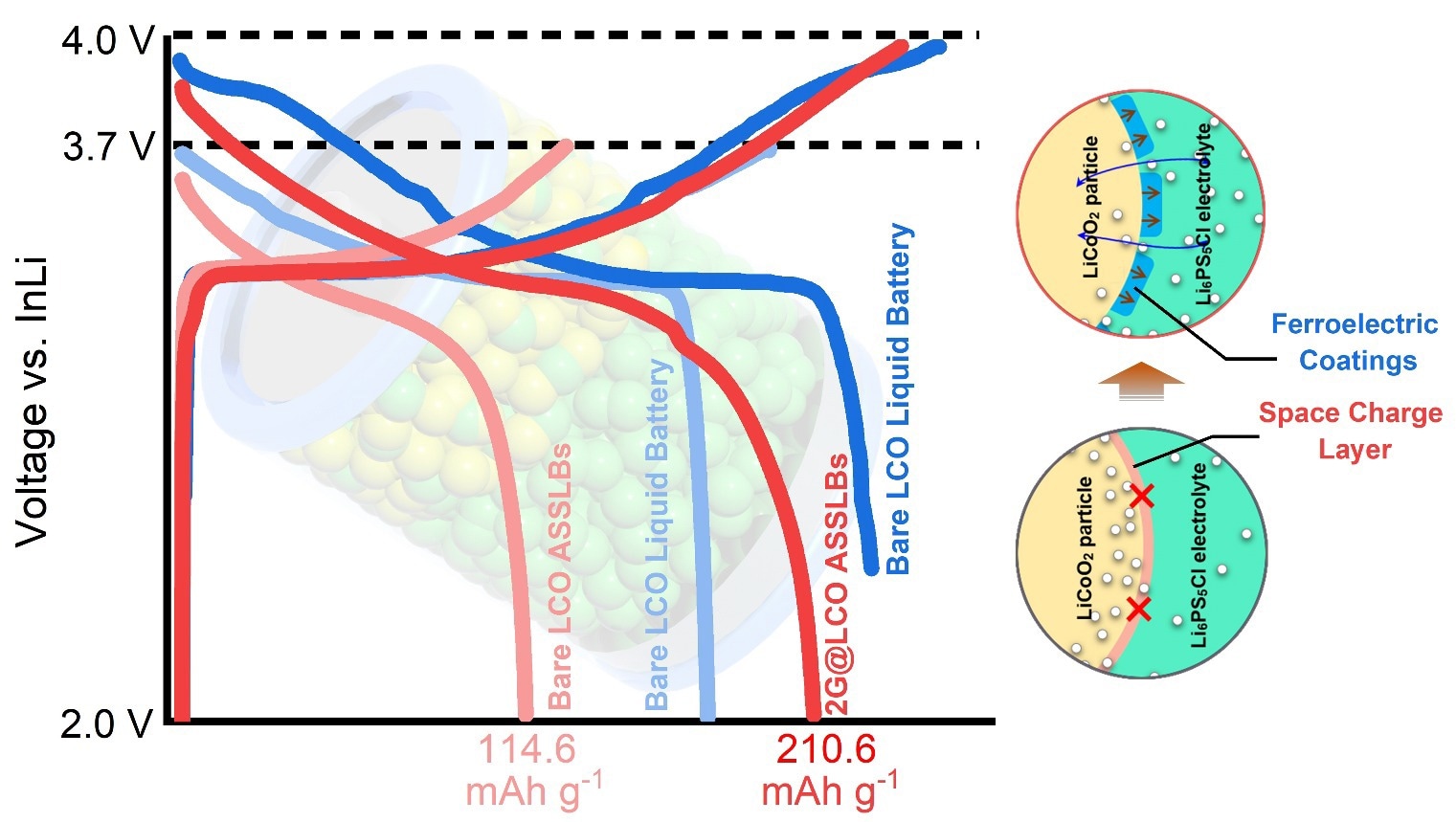Although lithium-ion batteries are currently the pinnacle of battery technology, scientists are scrambling to discover what comes next as the need for secure and reliable batteries grows.
 Molecular ferroelectric coating inhibits the space charge layer and enhances the Li+ transport at the cathode/electrolyte interface. Image Credit: LI Wenru and MA Jun
Molecular ferroelectric coating inhibits the space charge layer and enhances the Li+ transport at the cathode/electrolyte interface. Image Credit: LI Wenru and MA Jun
The capacity of all-solid-state lithium batteries must be increased for them to be a viable replacement for current lithium-ion battery technology.
Researchers from the Qingdao Institute of Bioenergy and Bioprocess Technology (QIBEBT) of the Chinese Academy of Sciences have just published a study that explains how ferroelectric cathode coatings increase the capacity of all-solid-state lithium batteries.
Advanced Functional Materials published the study on March 28th, 2023.
Ferroelectric materials have an intrinsically polarized electric field frequently employed in electrochemical research to speed up charge separation and transfer.
In the field of all-solid-state lithium batteries, it is widely accepted that the ferroelectric polarization induces the built-in electric field at the electrode/solid-state electrolytes interface, which could suppress the space charge layer and boost lithium transportation. However, the construction mechanism of the ferroelectric built-in electric field in these batteries is poorly understood. Revealing this construction mechanism becomes a critical challenge.
Dr. Wenru Li, Study First Author, Qingdao Institute of Bioenergy and Bioprocess Technology
The lithium cobalt oxide cathode was coated with guanidinium perchlorate, an organic-inorganic hybrid ferroelectric material, to better understand how the ferroelectric material enhances battery performance.
It was discovered that guanidium perchlorate coatings had a single-domain state, which means the inner ferroelectric dipoles all point in the same direction.
This activity eventually creates the downward built-in electric field at the cathode/electrolyte interface. Guanidium perchlorate, by the way, can be manufactured by evaporating solvents like ethyl alcohol, making it a cheap and ecologically favorable choice for battery manufacturing.
The researchers discovered that the capacities of all-solid-state lithium batteries with ferroelectric coating on the cathode are almost the same as existing liquid lithium-ion batteries and are significantly greater than the capacities of all-solid-state lithium batteries with uncoated cathodes.
They also investigated the effects of the coating on the interactions of the active particles with the cathode’s electrolyte. When the solid-state electrolyte and lithium cobalt oxide come into contact, a space charge layer is created that obstructs the flow of electrons through the battery.
The space charge layer limits the movement of lithium and lowers battery capacity. Despite the space charge layer, the battery’s capacity was increased when the coatings were applied to the cathode because the effective ferroelectric built-in electric field caused the lithium to pass across the cathode/electrolyte interface more fluidly.
Dr. Li added, “We found that the flexoelectric effect caused by the lattice mismatch is the primary factor for the self-polarization effect of the coatings. Our study not only designs the all-solid-state lithium batteries with excellent electrochemical performance, but also discovers the scientific theoretical guidance for constructing the ferroelectric coating layers in promoting performances of electrochemical energy storage.”
In the future, the researchers will examine various material combinations to increase the potential for all-solid-state lithium batteries.
We hope to expand this research idea to different combinations of cathode and ferroelectric materials in future work, and obtain experimental rules for optimal battery performance. The ultimate goal is to have a universal strategy improving lithium battery performance in practical applications. The ultimate goal is to have a universal strategy improving lithium battery performance in practical applications.
Dr. Guanglei Cui, Study Corresponding Author and Group Leader, Solid Energy System Technology Center, Qingdao Institute of Bioenergy and Bioprocess Technology
Journal Reference:
Li, W., et al. (2023) Self-Polarized Organic–Inorganic Hybrid Ferroelectric Cathode Coatings Assisted High Performance All-Solid-State Lithium Battery. Advanced Functional Materials. doi:10.1002/adfm.202300791.